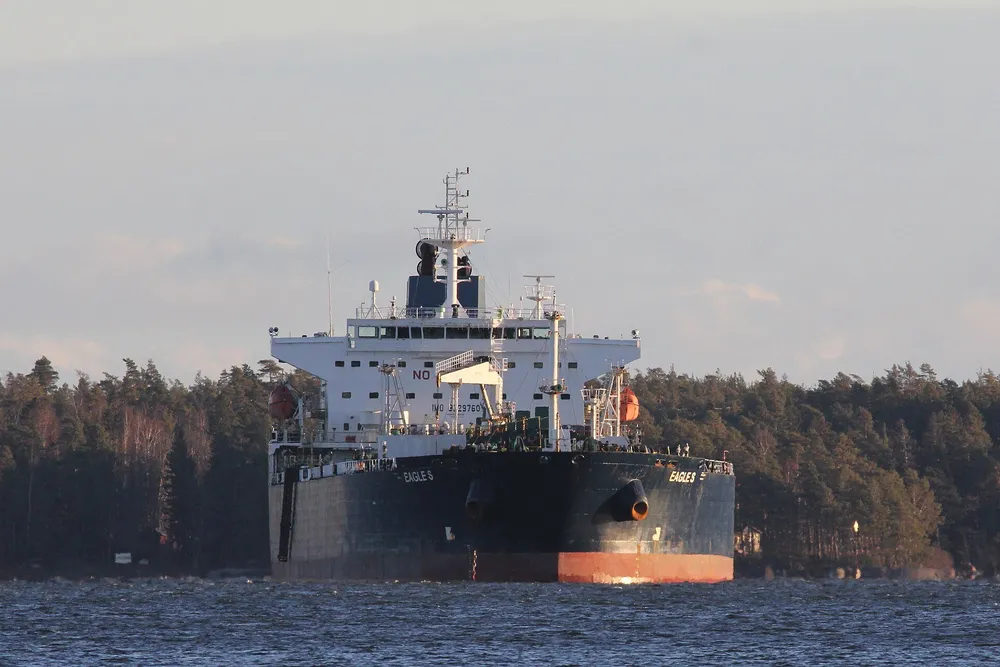Could piracy law be used to combat attacks on offshore wind power cables?
It has traditionally been thought that piracy requires two different ships to be involved, but this is not necessarily the case, argues international law expert

Power cables connecting offshore wind farms and countries are threatened like never before from grey zone warfare attacks linked to Russia and China – but a creative reimagining of piracy law could help fend off the shadowy vessels responsible.
The problem, said Jacques Hartmann, professor in International Law and Human Rights at the University of Dundee, is that beyond a state’s territorial waters – where it has basically the same rights as it has on land – its power diminishes dramatically.
This means that states can’t take action against the shadow fleet vessels – linked most notoriously to Russia – that are believed to be behind the incidents, even if they could easily reach them using patrol and military vessels.
“There's no legal basis for a state to go on board a ship, even if it's known that it's damaged the cable, if that happened outside the territorial sea,” he said – for example, if the incident took place in a state’s exclusive economic zone, which stretches much further out.
“So legally, what can we do about that?” asked Hartmann, who was speaking last week on a webinar on subsea security organised by defence and security think tank Royal United Services Institute.
Negotiating a new treaty is one option, but that “normally takes a long time.” A UN Security Council resolution would meanwhile “likely be vetoed.” There have he said been suggestions about establishing “protective zones” around cables – but the validity of these is disputed.
One other possibility that does exist, he said, is reframing attacks on subsea infrastructure as piracy under the terms of the United Nations Convention on the Law of the Sea (UNCLOS).
This UNCLOS provision “already exists, so we don't have to create a new treaty,” he said. The advantage of that approach is that by classifying such attacks as piracy it would give all states jurisdiction to board ships that are suspected of this, including those outside their territorial waters.
‘Plausible deniability’
So why aren’t states classifying attacks as piracy already?
The issue is how piracy is defined in UNCLOS. The convention, which sets out a comprehensive legal regime for the world’s oceans and entered into force in 1994, defines piracy as: “Any illegal acts of violence or detention, or any act of depredation, committed for private ends by the crew or passengers of a private ship or aircraft.”
These acts must be directed: “(i) on the high seas, against another ship or aircraft, or against persons or property on board such ship or aircraft; (ii) against a ship, aircraft, persons, or property in a place outside the jurisdiction of any State.”
Under this definition, piracy has “traditionally” been understood to necessitate there being two ships involved, said Hartmann – the so-called ‘two-ship requirement’. And that rules out attacks on subsea cables.
But Hartmann, who has written on the topic extensively, and even submitted his views to a UK Parliamentary committee on the topic, argues that this traditional understanding conflates the requirements of subparagraphs (i) and (ii) in the text.
Crucially, the second subparagraphs specifies that an attack on “property” – no mention of a second ship – could also constitute piracy. And this could include subsea cables.
Piracy also has to be committed for “private ends,” so it can’t be a state involved. But here comes the legal flourish. Russia and China may be heavily suspected of being ultimately behind these grey zone attacks from shadow fleet vessels against subsea infrastructure – but they hide behind a cloak of plausible deniability.
“That could also be used as an advantage,” said Hartmann. “Because you could argue if no state stands forward and says, ‘Actually, this was our crew,’ then you can use this plausible deniability argument to an advantage and initiate criminal prosecution.”
International law may be based on written treaties, but it also develops depending on how states interpret those treaties, he said. “So if a group of states goes out and says, actually, we interpret piracy as including attacks on subsea cables… then other states can either object or do the same.”